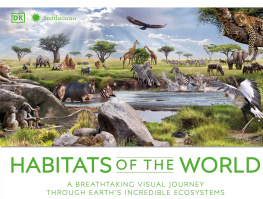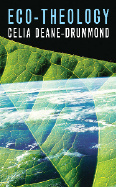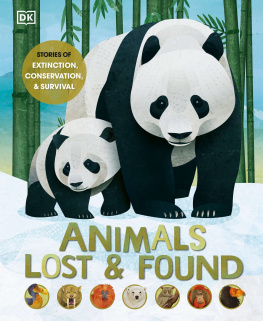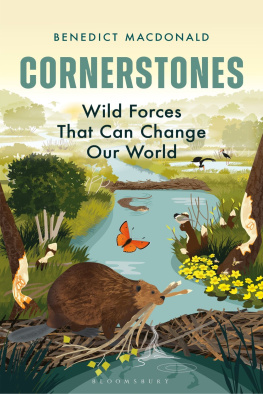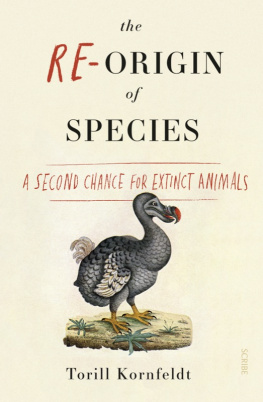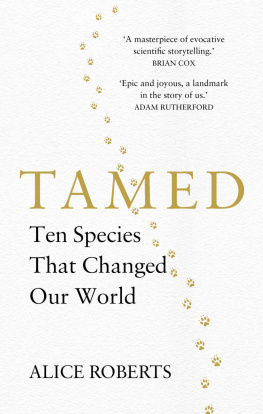Contents
Guide
Page List


For Oliv
Contents
i
the arctic: predators without prey
ii
new residents in the temperate zone
Cultural Assets under Threat:
Japanese Kelp
iii
exodus in the tropics
iv
solutions

Ediths Checkerspot, of the subspecies quino (top) and beani (bottom), is a captive of its environment, unable to survive if the climate grows too warm or arid.
prologue

It Begins
Southern California, before the turn of the millennium
It couldnt have been more innocent to begin with. In the San Ysidro Mountains close to the Mexican border, a butterflya checkerspotspreads its wings to reveal a flecked pattern in red and black. It takes off, before being caught in a gust of wind and borne hundreds of feet up the mountain.
Its fate seems sealed the moment it lands. For thousands of years, countless others of its species followed the same route, a chance gust blowing them up toward the summit. All have died without leaving any offspring. Evolution has specifically ensured that Euphydryas editha, or the Ediths checkerspot, can thrive only within a narrow temperature window. Should this species stray too far outside its usual climate, it will not survive.
Yet for this checkerspota femalesomething amazing is going to happen: She is going to live. Using the olfactory organs on her legs and feelers, she will sniff out wildflowers in this unfamiliar landscape and lay dozens of eggs, which she has carried around for weeks, on the undersides of their leaves. Then, the next stages of metamorphosis will begin; the caterpillars will hatch, eat, and pupate before emerging as butterflies.
She will establish a new colony.
But why has Euphydryas editha failed to colonize this higher spot before when this little checkerspot has succeeded? She is no more cunning, no stronger or better able to adapt, than those that came before her.
If this checkerspot has not undergone any fundamental changes in order to be able to survive in its new environment, then it must be the environment that has fundamentally changed.
And it has.
unusual behavior
Macquarie University, Sydney, Australia, June 1998
There was a knock at the door. Lesley Hughes looked up from her desk to see a face appear in her office doorway, complete with bushy beard and a head of fair hair. It was an older colleague from the Institute for Biology. He asked Hughes if she would like to give the opening address at the annual meeting of the Society for Conservation Biology. The prestigious conference was due to be held outside of North America for the first time, at Macquarie University in Northern Sydney, where Lesley Hughes, then thirty-eight, worked as a lecturer and researcher.
Hughes was honored; it was the first time in her still-fledgling career that she would have the opportunity to speak in front of experts from across the world. She decided she would simply report on what she had been working on for the last couple of years: the effects that climate change might have on animal and plant species in the future. She had simulated how eucalyptus trees in Australia would react if climatic zones were to shift one day. But that was a long way off.
Still, she decided to look over some contemporary studies from other parts of the world. She wanted to be sure she was prepared. After a little research, Hughes stumbled across something particularly puzzling. A handful of studies from notable journals were reporting highly unusual behavior in a number of species. These were no longer predictions; they were observations.
Hughes read about ferns unfurling on alpine peaks in Europe, Mexican voles in the southwestern US leaving behind a great number of their habitats and colonizing sites farther north, and yellow fever mosquitoes spotted in Colombia at altitudes of over 7,000 feet.
The more she researched the issue, the more examples she encountered: Fish populations off the coast of California were replaced. Resident cold-loving species were dropping while warmth-loving species from southern California increased. In Great Britain, bird species were moving permanently up north; the same was happening in the US.
One study in Nature especially caught Hughess eye: In the US, populations of Euphydryas editha had shifted northward by two degrees of latitude and climbed their way up mountains. This study stood out from the others in terms of its complexity, its volume of data, and the degree of care taken over the survey. It was published in 1996 and compiled by Camille Parmesan, a young biologist from the US. Parmesan had acted every bit the detective, canvasing museums in the western US for a whole year to use historical records to determine where the butterfly had lingered in the previous hundred years. She subsequently visited these sites herself to check whether there were still butterfly populations present. In four and a half years, Parmesan, at that time based at the University of Texas, observed over 150 sites in a strip along the West Coast from Mexico to Canada, including the San Ysidro Mountains next to the Mexican border. The result? Many butterfly populations in Mexico and the southern US had disappeared, while only very few had vanished in the northern US and Canada. Their center of distribution had shifted over 60 miles north and over 300 feet up. It was possible that these sensitive butterflies were serving as bioindicators for global warming, though this was as yet unproven at the time of publication. Conclusive proof, Parmesan wrote, would require more such studies, taking in other species and other regions.
Lesley Hughes was astonished. It was precisely these studies that she now held in her hands. She was conscious that some of them displayed weak points or were merely snapshots. There could be all kinds of reasons behind a shift in habitat, rogue years where the weather was particularly good or poor. Animals and plants were constantly moving from place to place, if only randomly. It was also conceivable that people had driven these species to move, by appropriating areas of land or spreading environmental pollutants. Yet most of the studies, and the coincidence of the shifts they described, gave her pause. It all pointed to a pattern.
Eventually, Hughes gave herself permission to ask the big question: Was the alarm bell already ringing? Has climate change already set the animals and plants of the world in motion?
the alarm
Washington, DC, 1985
The idea had come to him in the shower. It was where he often had his best breakthroughs. Robert Peters, known to friends and colleagues as Rob, had just completed his studies in biology at Princeton and started his first job, at the Conservation Foundation, a conservation organization in the capital. Part of his job required him to write an article on ideal layouts for nature reserves. Across the country, people in environmental conservation were discussing which was better: one large nature reserve or multiple small ones.
It might sound like a minor issue, of interest only to a small group of experts, but it was anything but. The topic was a timely one. The habitats of animals and plants across the world were shrinking as humanity spread. More and more habitats were surrounded by towns and agricultural land or carved up by roads and canals. They were like islands in a vast ocean.


